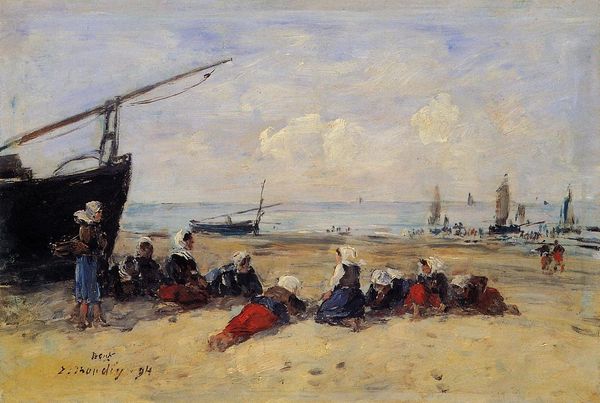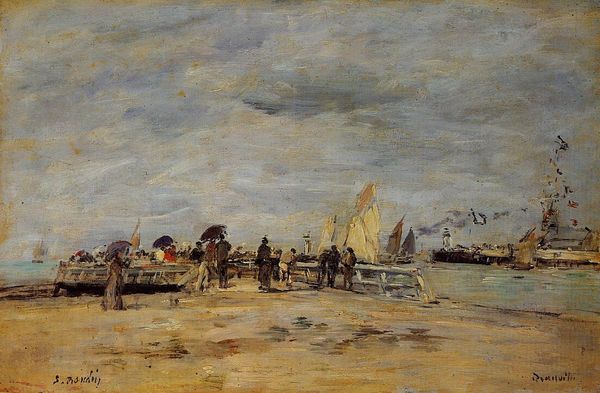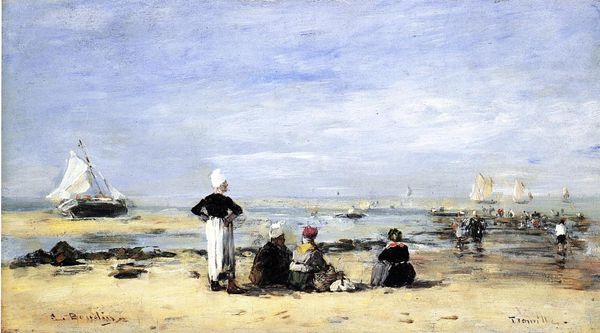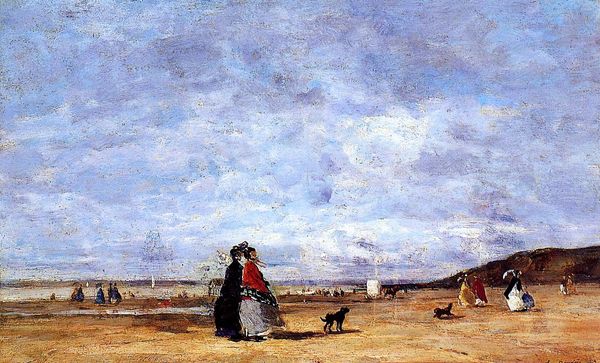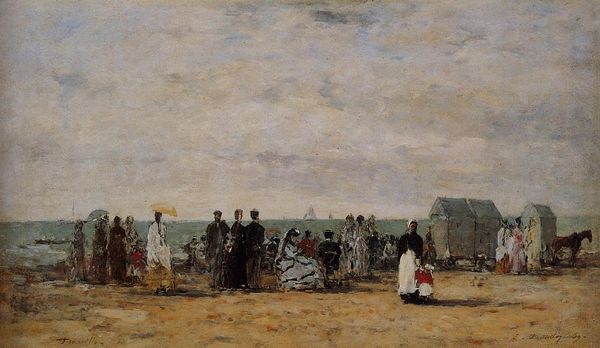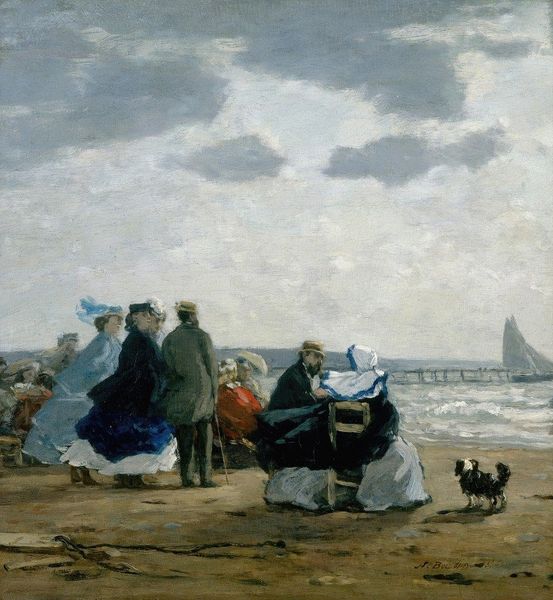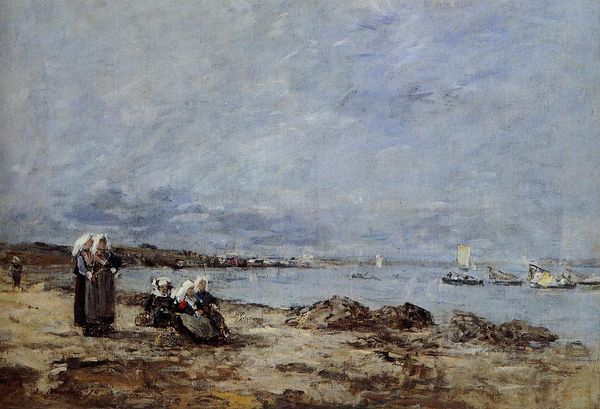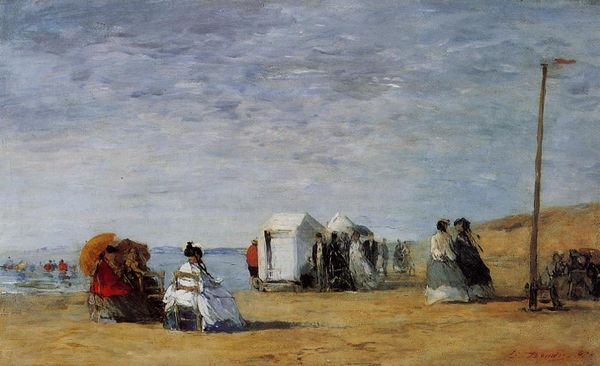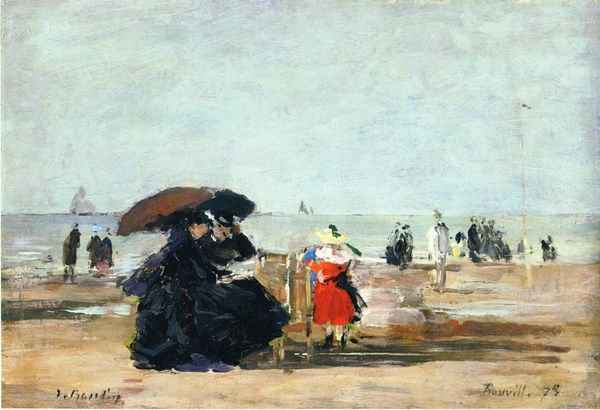
plein-air, oil-paint
#
acrylic
#
impressionism
#
plein-air
#
oil-paint
#
landscape
#
figuration
#
oil painting
#
intimism
#
romanticism
#
genre-painting
#
watercolor
Copyright: Public domain
Curator: This is Eugène Boudin's "Beach Scene." Painted with oils, it gives us a glimpse into leisure and coastal life of the time. It's part of a private collection, but it is representative of his broader oeuvre. Editor: The thing that strikes me immediately is the interplay between the subtle, muted tones and the bright pops of color in the figures’ clothing. It creates a visually appealing focal point amid the rather subdued landscape. Curator: Indeed. Boudin's technique often involved applying thin layers of oil-paint en plein-air, trying to capture the ephemeral qualities of light and atmosphere. His dedication to this process was groundbreaking and hugely influential for later Impressionist painters, including Monet, whom he mentored. He found truth in depicting everyday life. Editor: Absolutely. And let's consider that 'everyday life' was, in itself, changing dramatically. As seaside resorts grew in popularity in the mid-19th century, so did the representation of leisure in art. Boudin played a role in popularizing this theme. Also, you can see the very direct effects of new developments in portable paint production influencing his process. Curator: Right. With ready-made paint tubes easily available, artists could escape the studio. The painting feels quite immediate; you can almost feel the slight breeze coming from the sea, as well as an underlying sense of industry with the boats shown at the center horizon line. The material process here opens up this historical perspective on changes of this moment. Editor: And these beach scenes reflect the broader democratization of leisure. It also reveals who had the means to participate in it; those who could afford the new train fares that carried people to new resort locations on the Normandy coast. These artworks show the commodification of “the beach experience”, so to speak. Curator: Very good point! These new locations fostered an expansion in art market and the commercial opportunities it held for artists, shaping the trajectory of plein-air painting and modernism itself. Editor: Yes, exactly! It is interesting to think about how the commercial possibilities allowed more focus to be on the material production of these landscapes. We would be remiss not to notice that, perhaps counter-intuitively, these casual, bright, carefree paintings came out of serious, complex socioeconomic shifts. Curator: Considering the social contexts and processes, it certainly gives one something more to reflect upon. Editor: Definitely changes my initial impression. There’s more depth to those muted tones now.
Comments
No comments
Be the first to comment and join the conversation on the ultimate creative platform.

